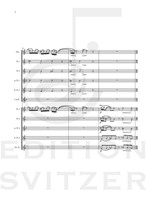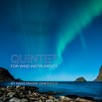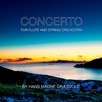
Pastorale
Composer: Hans Magne Græsvold
Instrument: Flute Ensemble
Level: Advanced
Published: 2013
Price: €28.00
Item details
-
Description +
-
Duration: 4:30 min.
Pastorale (pastor = shepherd) denotes an instrumental or a vocal piece written in imitation of the music of shepherds, their shawms and pipes. Typical features are the 6/8- or 12/8-meter in moderate tempo. The native country of the pastorale is Italy. There one finds a piece almost identical with the pastorale, the siciliano.
In the 16th century there are dramatic performances of pastorales with madrigals. These became the important forerunners of opera. Later on, in the baroque era, the siciliano often was incorporated as a movement in sonatas and other instrumental music.
My pastorale is a free composition not associated with folk tunes, but it is possible that you may find influence from folk music. Meter from the siciliano is found, but the rhythmic picture is more variable - with the intention to give life, vitality and drive to the music.
There are two groups in the piece that play against each other and meet in a large ensemble. It is important that the groups function precisely rhythmically. When the groups meet the dynamic must have a clear forte-character. And I have to mention that the short solo sections (the ´bird chirping´), performed with rubato, must not have a too strong accompaniment.
Pastorale is commissioned by Sandra Ragusa and the National Flute Association's Professional Flute Choir.
-
-
Instrumentation +
-
Flute Ensemble
-
-
About the composer +
-
Hans Magne Græsvold was born in Vennesla near Kristiansand, Norway in 1936. He started playing the flute at the age of 7 and received his education in composition and flute at the Oslo Conservatory of Music and the University of Oslo. He made his debut as a flautist in Kristiansand in 1958 and in Oslo in 1962. After completing his Master`s degree in Music he became Assistant Professor at the University of Trondheim in 1963 where he remained until 1973. His main subjects were music history, composition, harmony and flute. In 1973 he moved back to the south and took up a similar position at the Agder Conservatory of Music in Kristiansand (from 2007 Agder University, Faculty of Fine Arts, Department of Music). In addition to his teaching Græsvold has contributed many articles to several scientific publications. In 1986 he was the editor of Edvard Grieg´s Vocal compositions with Orchestra, published by Peters in 1986, and in 1999 he co-edited with Terje Mathisen an edition of the songs of Sigurd Lie. Very little of this talented composer`s work has been published and Græsvold and Mathisen continue to edit and publish his compositions for choir, orchestra and ensembles.
As a composer Græsvold was initially influenced by Norwegian folk music, but later took inspiration from European composers especially Bartok, Schoenberg and Messiaen. His music includes several orchestral works (amongst them a flute concerto and a clarinet concerto) and chamber music (3 piano duos, 2 string quartets, 1 quartet for flute & strings, 2 sonatas for flute and piano, a suite for violin & piano, 1 piano sonatina and 1 guitar sonatina). In addition to several single movements for piano, guitar, flute, violin, cello, accordion, organ and 30 romances, Græsvold has also made several contributions to church music with his 3 cantatas, 2 masses and 30 motets. In addition he has made a large number of arrangements for different ensembles. He is a member of the Norwegian Society of Composers.
In 2007 Græsvold was awarded the Kings`s Order of Merit in gold as an acknowledgement for his work as a musician and composer.
-
-
Credits +
-
Front Cover graphics and layout: Ronni Kot Wenzell
Printed in Copenhagen, Denmark
Copyright © Edition Svitzer
www.editionsvitzer.com
-







